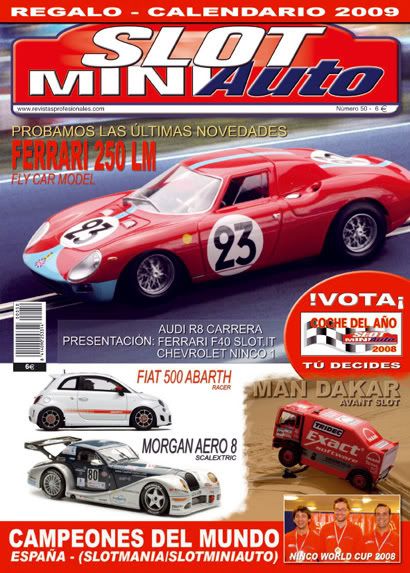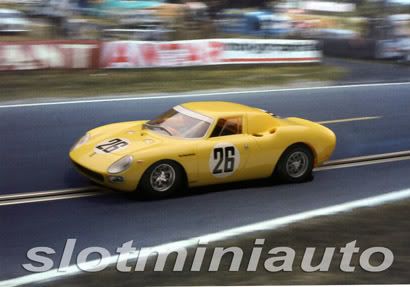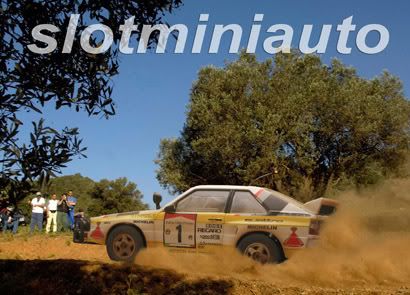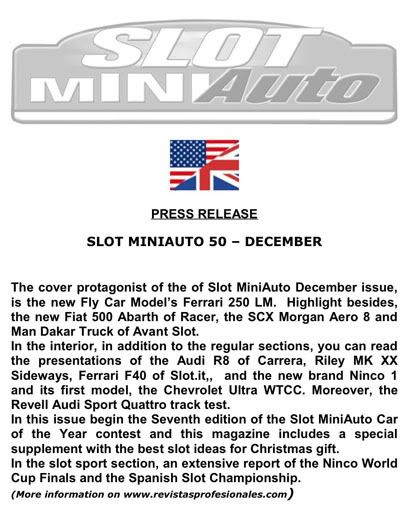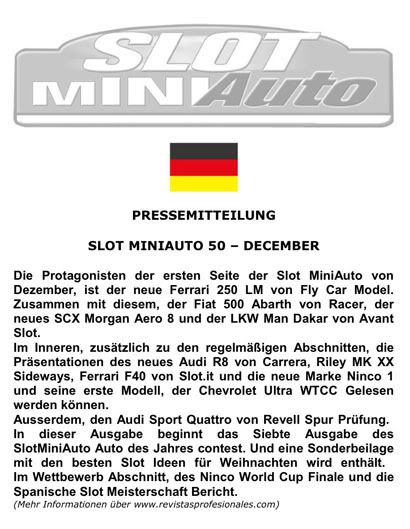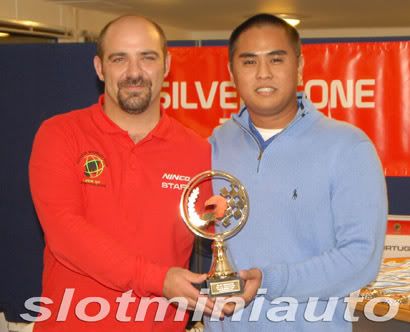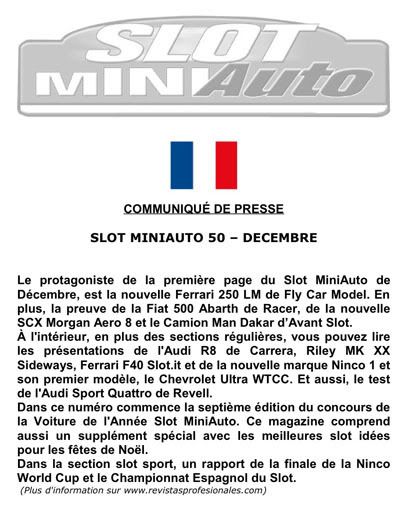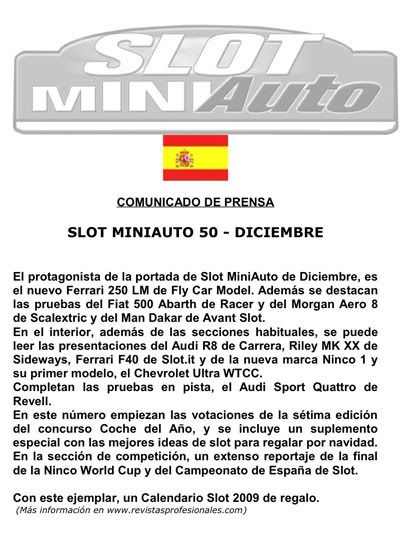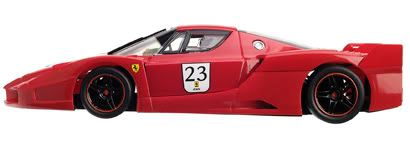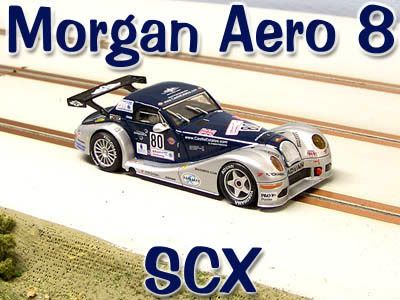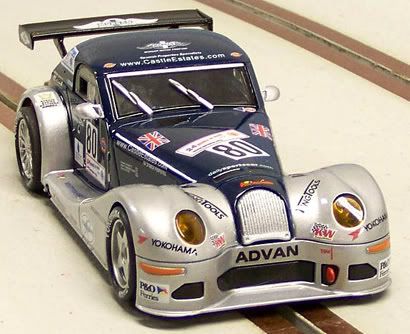
I think I am in love.
Even after 3 years of heartache while waiting since it was first announced, I am still enamored with this car. I knew it would look good from years of experience with Autoart diecast cars, but some of their previous 1/32 slot cars had been less than impressive from a performance standpoint. I am happy to say that this car meets nearly all of my expectations for a great slot car. Autoart have addressed several problematic designs and produced a surprisingly good driving slot car!

And what better car to build so well, than the gorgeous Jaguar C-Type that won Lemans for the second time in two years in 1953, this time in the hands of Tony Rolt and Duncan Hamilton. It was based on the production XK120 sports, but covered in a lightweight, aerodynamic, and beautiful aluminum body. It was also one of the first racer cars to make successful use of 4 wheel disc brakes, which made up for slightly lower top speed than some other cars. The car was certainly fast because this victory also marked the first time a car had averaged over 100mph for 24 hours, 105.85 mph to be exact.
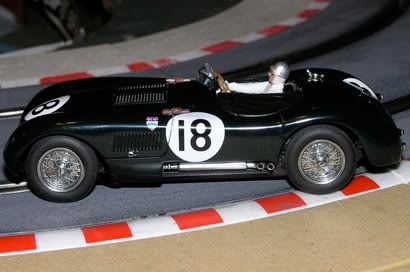
First let me say that I am not a scale or jaguar expert and I apologize because my photos can not do this car justice. But to my eye, I think Autoart (AA) have nailed this car. The proportions, colors, and stance are just about perfect, again to my eye. It is about the size of the Carrera D-Type, just slightly longer wheelbase and wider track, but much smaller than the Ninco XK120. The overall length is 122mm, the track (outside edge of tread) is 45mm front and 47mm rear, and the wheelbase is 76.5mm. And the details are breathtaking, rivaling their 1/18 scale diecasts. The wheels are stunning with photo etched wire inserts and knock offs mounted with scale narrow tires.

The paint is a very dark, deep green applied perfectly smoothly. There are photo etched grills and latches and the gas cap is very realistic. The tonneau cover is made of rubber, as is the driver! This is a great idea for an open slot car with no roll bar, even run with the magnet, I doubt you’ll be able to lose this driver’s head... The leather straps holding the engine cover on also seem to be molded of rubber. The full depth interior is nicely detailed too. The car also has working lights front and rear! This level of detail on a $45 car is just amazing.
But this cars beauty is more than skin deep. In order to have the full interior this car is a front motor design. While they are almost never the fastest, I really enjoy the handling of a front motored car, especially with no magnet if set up correctly. They seem to be more forgiving and easier to drift smoothly. The motor is connected to the driveshaft with the standard spring, but the driveshaft rides in a brass bushing like the axles for all 4 wheels. The gears are the standard AA 10/28 plastic pinion and crown, but run very smoothly from the start. The front axles are independent stubs, but they are metal ones riding in brass bushings and with virtually no play at all!? Until I removed the body, I though it had a solid front axle!
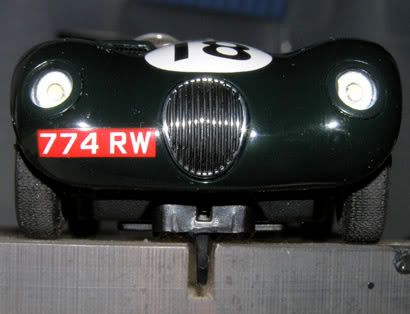
The guide is relatively solid and sits almost perfectly deep in the slot with the front tires just touching the track! No adjustments needed and it is the standard style with wires attaching directly into the braids. The chassis is also nice and straight with all 4 wheels touching evenly. The lighting wires have a quick release plug for disconnecting the body from the chassis when it is removed. There is a single bar magnet glued into a slot on the bottom of the chassis about halfway between the motor and rear axle. The magnet can be removed by pushing through slots from the top of the chassis, which I did later because like rally cars, vintage sports cars shouldn’t have magnets.

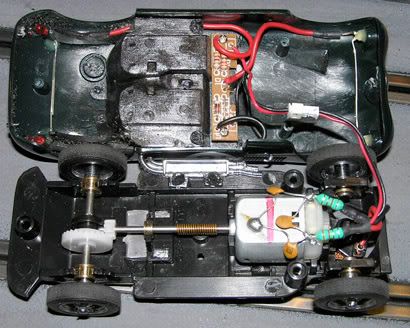
The magnet is not too powerful when first run on my Scaley Sport track and the motor has good response, and brakes!? It must be new because previous AA motors seemed to lack torque, especially with magnets, and braking. It seems closer to the standard Mabuchi motor used by Scalextric power and brake wise. The car was very quick, but would slide fairly predictably without crashing. It was also quiet and smooth running, but the brass bushings need a little oil and some grease for the gears. Although the car ran very well with magnetic down force, I was scared to crash my new prize, so I soon removed the magnet to see how bad it could be? To my pleasant surprise, it was drivable with just the magnet removed on stock tires! On the stock 16v power, I had to be very gentle with the throttle, but it could be smoothly run around! And it could be pushed to drifting without crashing if done with care. It seemed to have potential!
A little tuning seemed to be needed, but just a little. Most front engine cars respond well to weight added near the back to bring them to at least a slight rear weight bias, which seems to work well with slot cars. I added about 6-7 gms. of lead in the stock magnet pocket and above the chassis right behind the magnet pocket, just ahead of the rear axle, as seen in the photos. The only other tuning done was a pair of Tru Grip tires for Scalextric Cooper F1 cars on the rear. Other narrow vintage tires should also fit. The wheels were also cleaned up to remove a little flashing on the ribs, but they seem pretty true. I did have to trim the inner rear wheel wells inside the body (also seen in the photos) to clear the new tires, although they are just slightly larger than the originals.
With these few easy changes, the car improved greatly. It is now quicker, but also very easy to push hard, drifting smoothly out of turns just like they did for 24 hours back in the day. It can be driven deep into the corners using the strong brakes (just like the real thing!) and while it will just tip at the limit, it is pretty easy to feel the edge. Though the power is a bit strong for this vintage on this voltage, this new motor is much easier to control than the old AA lump. It is just a really fun car to drive now. And the wonderful combination of a beautifully scaled and detailed model that runs so well is just what this hobby is all about. I spent hours in the basement last night just sliding it around my track with a smile on my face. And for the price of this model, I think Autoart has raised the bar for value in vintage slot cars.

